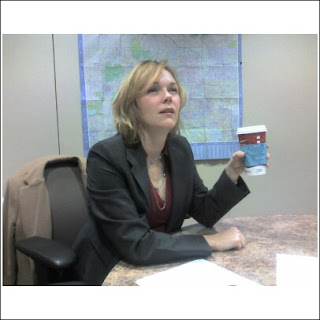Coming from our newsletter? The rest of the article is below. New on the blog? The Emotional Intelligence for Team Success article is at the following address:
http://www.verbalwise.com/resources/articles/EQforTeamSuccess.pdf
Well, in order to be effective members of a team, we must understand what we are capable of offering as individuals. We should also recognize our current limitations and our emotional triggers. If Joe knows he becomes frustrated when forced to work under extreme pressure, he can begin finding ways to avoid an outbreak of emotions that could undermine the team’s success.
From a social competence standpoint, in order to work effectively with others on the team, it’s important we know what they are capable of offering, what triggers their negative emotions, and how to help guide them down the most rational path. If the rest of the team knows that Joe doesn’t work well under pressure, they will be more capable of dealing with the problem should it arise. Furthermore, if this emotional trigger is addressed as a team, there becomes an opportunity for the other members to help Joe find ways to avoid the trigger. Open communication helps to set a proverbial bar that the team can help Joe to raise over time.
Identifying the emotional intelligence of team members and the overall team establishes a baseline for health that can be improved with effort. Some of the most collaborative environments in business, synagogues, associations and families, are those filled with people who recognize the important role EQ plays. They identify their group’s current EQ state, implement practices that improve it over time, and measure it regularly to make sure it is heading in the right direction. This results in a powerful team with self-motivated individuals who achieve amazing results again and again.
We're looking for your feedback! Please respond to our blog with your best (and worst) team experiences. It can be anytime you have been in a team situation; a sport, a group project at work, anything! We appreciate your comments!
Tuesday, May 27, 2008
Wednesday, April 23, 2008
New Habits
If you are one of our regular readers, you'll notice that the blog postings have been, well, irregular. It's hard to make something a habit, no matter how dedicated you may feel. Here's some tips we can share to make your desired commitment easier:
- Write it out. If you write down what you want to do, it is a conscious decision that you are aware of.
- Pencil it in. Don't just add it to your "to-do" list, because it will probably remain there. Be specific about what time you plan on giving to your new goal.
- Be consistent. This one's a biggie, as experts say it takes at least 21 days to establish a new habit. Practice it every day instead of only a couple times a week.
- Tell a friend. They can hold you accountable for it, and who knows, they might join you too!
- Do what works for you. Some can quit a bad habit cold turkey, while some need to slowly phase it out.
- Try again. If at first you don't succeed...keep going, you can do it!
- Measure it. Create a system to see how successful you have been and take note of the positive changes.
As far as our blog is concerned, it is still relatively new to us and difficult to make it a habit. But if we stay focused, we can get it done without missing a beat!
Wednesday, March 5, 2008
Consulting, Coaching, and Training - Oh My!
(If you're stopping by from our newsletter, scroll down to catch the rest of the article, three paragraphs down). If you're just joining us, here's my view of consulting, coaching, and training!
A lot of clients ask us what the differences are among consulting, training and coaching. Well, there’s no doubt that any definition we give here will be inconsistent with our competitors and allies. But here goes:
We think traditional consulting consists of meeting with key players within an organization regarding an issue they are facing; assessing the situation or process; and making recommendations as to how to solve the problem. Traditional coaching is very much like the role of a sports coach – except it often takes place one-on-one between the coach and a business owner. Think of the high school basketball coach spending time after practice with one team member. The great thing about coaching is that since business owners do not have “bosses,” it helps them stay accountable to action. Lastly, traditional training is that process that takes place where an instructor who is considered a subject-matter expert invites numerous people to sit through an information transfer session.
Disagreements? I thought so. But before you go, here’s my take. While I am sometimes called a consultant, I usually only take on projects where I am actively involved in the implementation. That’s the best way to maximize impact on the bottom line. I focus on the business as a whole, so while I have been referred to as a coach, even by my clients – that I am not. Coaches like Kim Greenspan and Beth Miakinin help business owners become more effective at what they do – they help hold you accountable. They help you strategize for your future. Oh, and the training piece – I think … scratch that … I know that the best way to get people to change is to help them along the way with experiential learning and a methodology for applying it to their own situation. Information transfer and/or education is great, but so much better if it drives people to action.
Tell us what you think about consulting, coaching and training!
-Tammé
A lot of clients ask us what the differences are among consulting, training and coaching. Well, there’s no doubt that any definition we give here will be inconsistent with our competitors and allies. But here goes:
We think traditional consulting consists of meeting with key players within an organization regarding an issue they are facing; assessing the situation or process; and making recommendations as to how to solve the problem. Traditional coaching is very much like the role of a sports coach – except it often takes place one-on-one between the coach and a business owner. Think of the high school basketball coach spending time after practice with one team member. The great thing about coaching is that since business owners do not have “bosses,” it helps them stay accountable to action. Lastly, traditional training is that process that takes place where an instructor who is considered a subject-matter expert invites numerous people to sit through an information transfer session.
Disagreements? I thought so. But before you go, here’s my take. While I am sometimes called a consultant, I usually only take on projects where I am actively involved in the implementation. That’s the best way to maximize impact on the bottom line. I focus on the business as a whole, so while I have been referred to as a coach, even by my clients – that I am not. Coaches like Kim Greenspan and Beth Miakinin help business owners become more effective at what they do – they help hold you accountable. They help you strategize for your future. Oh, and the training piece – I think … scratch that … I know that the best way to get people to change is to help them along the way with experiential learning and a methodology for applying it to their own situation. Information transfer and/or education is great, but so much better if it drives people to action.
Tell us what you think about consulting, coaching and training!
-Tammé
Thursday, February 28, 2008
Take a Leap
So many of us wish we had more hours in a day to get it all done. If you had an extra hour, what would you do with it? I'm sure some would take a longer lunch, but seriously, what could you get done with an extra hour? What about a whole extra day? Tomorrow is Leap Day, the 29th of February. It doesn't really seem like a 'bonus' day, just another day of the week. But at least it's a Friday, so TGIF!
Thursday, February 21, 2008
Inspiration
Whenever I work on our newsletter (like I'm doing now, for March), I love surfing the internet hunting around for fun little tidbits that our readers will enjoy, such as quotes, good pictures, random tidbits of information, etc. But I got to thinking, what if I create a forum where our readers can send us feedback on what they'd like to see? So I decided to talk about it here. Of course, you can always email me at kristen@verbalwise.com if you'd like to send something in anonymously. But if you like, send some comments on our blog here! We'd love to get your feedback and gather some inspirations to those who matter most to us - you!!
So what can we do to better serve your needs? What types of articles are you looking to read? How can we help your organization grow? Or even fun stuff: what type of contest would you like to see, what would make a good prize that you'd like to receive?
Send us your thoughts!! :-)
-Kristen
So what can we do to better serve your needs? What types of articles are you looking to read? How can we help your organization grow? Or even fun stuff: what type of contest would you like to see, what would make a good prize that you'd like to receive?
Send us your thoughts!! :-)
-Kristen
Thursday, February 7, 2008
Avoiding Unwanted Viruses
If you're coming over from the newsletter, this is the continuation of the article in the February issue. If you're just joining us, here's some tips to avoid unwanted viruses. If you'd like the part of the article that precedes these tips, email kristen@verbalwise.com!
Follow these simple tips to avoid unwanted viruses:
1.) If you know the name of the person sending a message with an attachment, don’t automatically assume it’s from them. Look at the subject line. If it doesn’t make sense to you, don’t open it.
2.) Spam filters sometimes filter out perfectly good messages. Check them regularly to make sure wanted emails are not being filtered. If you find one, make sure to add the sender’s name to your contacts list and/or white list. See # 3 below for Outlook steps.
3.) Set up your spam filters to work for you.
a. In Outlook, go to Tools Menu, select Options, Choose the preferences tab (which will probably already be selected); choose the junk mail button; choose the safe senders tab; click the add button, type in an email address (tamme@verbalwise.com) which is good for people with personal emails like yahoo, gmail, etc. Or, you may entire a domain (@verbalwise.com), which will allow anyone from a specific company to contact you. This is a good idea for companies you trust and work with regularly.
b. In other email applications, it’s sometimes as easy as adding people to your contacts list. So, when you sign up for a newsletter or meet a new prospect, add the name and email address to your address book!
4.) VerbalWise does not send attachments unless we are working with a specific client who is expecting them. You may want to follow the same practice to help your recipients.
Hope these tips help you to avoid unwanted viruses (after all, what virus is wanted?) Feel free to comment if you have some tips of your own that go along with these!
Follow these simple tips to avoid unwanted viruses:
1.) If you know the name of the person sending a message with an attachment, don’t automatically assume it’s from them. Look at the subject line. If it doesn’t make sense to you, don’t open it.
2.) Spam filters sometimes filter out perfectly good messages. Check them regularly to make sure wanted emails are not being filtered. If you find one, make sure to add the sender’s name to your contacts list and/or white list. See # 3 below for Outlook steps.
3.) Set up your spam filters to work for you.
a. In Outlook, go to Tools Menu, select Options, Choose the preferences tab (which will probably already be selected); choose the junk mail button; choose the safe senders tab; click the add button, type in an email address (tamme@verbalwise.com) which is good for people with personal emails like yahoo, gmail, etc. Or, you may entire a domain (@verbalwise.com), which will allow anyone from a specific company to contact you. This is a good idea for companies you trust and work with regularly.
b. In other email applications, it’s sometimes as easy as adding people to your contacts list. So, when you sign up for a newsletter or meet a new prospect, add the name and email address to your address book!
4.) VerbalWise does not send attachments unless we are working with a specific client who is expecting them. You may want to follow the same practice to help your recipients.
Hope these tips help you to avoid unwanted viruses (after all, what virus is wanted?) Feel free to comment if you have some tips of your own that go along with these!
Tuesday, January 29, 2008
Behind the Scenes at Michigan Entrepreneur TV!
Here are some pics taken behind-the-scenes from Tammé's interview at Michigan Entrepreneur TV.
Here's Tammé in the prep room, watching the previous interviewee:

One of the technicians working the board in the sound room:

A view of the set from the sound room:

A close-up of Tammé and Tara on set:

Want more info on Michigan Entrepreneur TV? Check it out at http://www.michiganentrepreneurtv.com/!
Here's Tammé in the prep room, watching the previous interviewee:

One of the technicians working the board in the sound room:

A view of the set from the sound room:

A close-up of Tammé and Tara on set:

Want more info on Michigan Entrepreneur TV? Check it out at http://www.michiganentrepreneurtv.com/!
Subscribe to:
Posts (Atom)